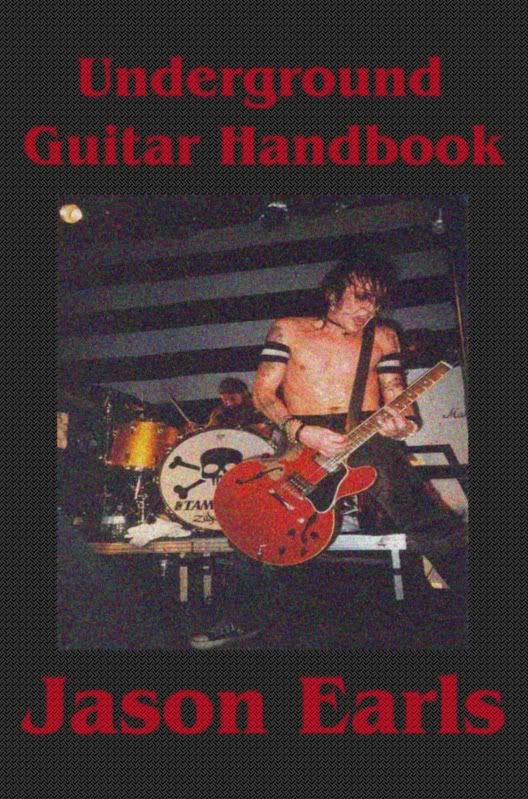By Jason Earls, author of How to Become a Guitar Player from Hell & Cocoon of Terror
The experimental composer, John Cage, wrote many compositions for "prepared piano," which is when various objects such as bolts, screws, pins, plastic, pieces of weather-stripping, rulers, rubber, etc., are inserted between the strings of a piano. As you can imagine, the sound of the instrument is greatly altered when the strings are "prepared" in this way. Usually one attempts to place the objects inside the piano so the resulting notes and chords sound "good" or "musical" in some way when they piano is played. But "discordant" or "ugly" sounds are also permitted, since there are no rules in music.
Concerning the electric guitar, can we can extrapolate the idea of a prepared piano to that instrument? Of course we can. Fred Frith, an English guitarist, was probably the first person to prepare his guitar in the same manner as John Cage's piano. He would use metal, rubber, plastic, and other materials and place them between the guitar strings, then he would pluck, strike, rub, or scratch them with different objects, rather than use his fingers or a plectrum to execute the notes. Fred Frith also built his own guitar-like instruments for even more extensive exploration and experimentation with sound. For example, once he attached strings to a regular door and added electronics and pickups to make a very large electric guitar.
Perhaps you would like to prepare your guitar with various objects and experiment with the different sounds that can be produced. I have done it a few times in the past and I can assure you it is a lot of fun.
Because this article deals with an experimental method of guitar playing, there will be no exact licks provided. And there will be no precise algorithms to follow either. To play with a prepared guitar, all you will need is your imagination, a few household objects or materials you can find in your garage, and then it will be up to you how exactly to play the "notes" after you have inserted the objects between the strings of your guitar (or on other parts of your instrument.) Remember when playing a prepared electric guitar to be bold and strive to make good compelling music.
But hold on, I do have a few suggestions for you. I have found that effects pedals can help make things more interesting when working with a prepared electric guitar: distortion pedals, chorus pedals, echo, flanger, reverb, etc., they can all help you sound more interesting. Just a few weeks ago, I prepared one of my electric guitars using regular construction nails, clothespins, and a couple of cards (from a regular pack of playing cards used for Poker and other games), then I added some echo and distortion and succeeded in recording some highly intriguing sounds. Tremolo bars may also be interesting to use with prepared guitars, although personally I haven't tried that particular technique yet.
You may want to search for "Fred Frith" and "John Cage" on youtube.com and watch some of their videos to see if you like their music. Perhaps they will inspire you.
-end-
Jason Earls is author of the books Cocoon of Terror (Afterbirth Books), Red Zen, How to Become a Guitar Player from Hell, Heartless Bast*rd In Ecstasy, If(Sid_Vicious == TRUE && Alan_Turing == TRUE) {ERROR_Cyberpunk(); } and 0.136101521283655... all available at Amazon.com and other online book stores. His fiction and mathematical work have been published in Red Scream, Yankee Pot Roast, Scientia Magna, three of Clifford Pickover’s books, Mathworld, Thirteen, Chiaroscuro, Dogmatika, Neometropolis, Prime Curios, the Online Encyclopedia of Integer Sequences, OG’s Speculative Fiction, AlienSkin, Escaping Elsewhere, Recreational and Educational Computing, Theatre of Decay, Nocturnal Ooze, Bust Down the Door and Eat All the Chickens, and other publications. He currently resides in Texas with his wife, Christine.
Sunday, December 7, 2008
Subscribe to:
Post Comments (Atom)

No comments:
Post a Comment